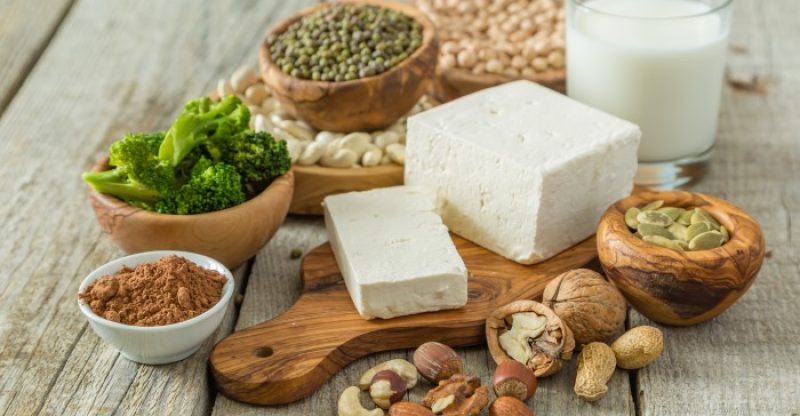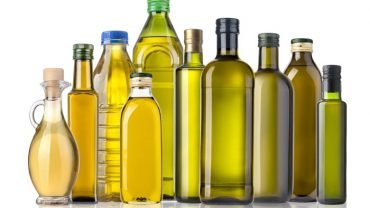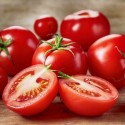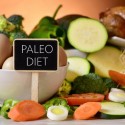10 Best Plant-Based Protein Sources
What is Protein?
Proteins are literally “the building blocks of your body” and incredibly vital when it comes to the proper functioning of your muscles and organ systems.
They not only fashion your skin, hair, and nails but also serve as enzymes, hormones and immune systems in your body.
They deserve the utmost importance and focus when it comes to a healthy diet and lifestyle.
When you think of protein-rich food, steak or an omelet or maybe a bar of protein snack is what crosses your mind.
To fulfill the need for proteins some people may even opt for protein powders before their workouts while some bodybuilders rely on chicken, tuna, and eggs in order to get desired results.
It’s no wonder then, that when you start preferring a plant-based diet, what pops up in your mind immediately is,
Am I getting enough proteins?
Do I need protein from other sources like powders?
Will the plant-based diet provide me with complete proteins?
Myths about Plant Proteins
- Plant-based sources do not provide enough proteins.
- Plant-based foods do not have complete protein.
- Only animal-protein is capable of building muscle.
Busting the myths:
The nine essential amino acids, which your body does not make on its own, must be obtained from the diet.
A vast variety of grains, legumes, and vegetables are capable of providing all of the nine essential amino acids your body needs.
It was once considered that different plant foods needed to be eaten together to get their complete protein value, also called “protein combining” or “protein complementing”.
Latest researchers suggest that as long as your diet includes a variety of grains, legumes, and vegetables, complete protein needs are met.
Athletes of all types can build extraordinary muscle strength and bulk with plant-based proteins.
Choosing the right kind of protein that can help you build and sustain muscle is crucial.
The ideal proteins come from whole foods and alkaline-forming foods, like plant-based sources such as nuts, seeds, or beans.
Not only will you be obtaining complete proteins, but plant-based proteins that are rich in antioxidants will help reduce the inflammation caused by exercise, supporting you to recover from trainings faster.
Plant Protein Benefits
- Easy on the Gut
Your body does not store or make all required protein on its own.
So you need to consume the nine essential amino acids of protein for complete nutrition.
Your body needs to work harder to break down animal protein into separate amino acids before it can use them, which results in slower digestion.
Veggies, on the other hand, are simpler to digest.
Your body can then use the energy it saved on digesting plants proteins on muscle repairs and disease prevention.
Moreover, animal protein puts the strain on your liver to process uric acid, which is a byproduct formed during all animal protein digestion.
The fiber content is what makes it supreme for your digestive system while animal protein sources are devoid of fiber on their own.
- Maintain Weight Loss
If you are desperately trying to lose weight, plant proteins can help you out in many ways.
Vegetables and beans contain a lot of water along with fiber and protein that can make you feel fuller but with a lesser calorie intake at the same time.
Ashvini Mashru, MA, RD of Wellness Nutrition Concepts, LLC claims, “Diets that contain plenty of protein, fiber, and water usually make you feel fuller, faster and ultimately may decrease subsequent energy intake.”
A study from the University of South Carolina revealed that a plant-based diet can lead to better weight loss results than those that include meat without counting calories.
That does not mean you need to have a meatless lifestyle, but rather that by including more plant proteins you can lose weight as they are filling you up as well as providing you with the vital nutrients your body requires.
- Improve Metabolism
According to research at Harvard University, people who consume plant proteins have better metabolism, lower risk of obesity, and greater longevity.
- No Harmful Chemicals and Hormones
Nitrates and nitrites in meat, as well as steroid growth hormones induced in animals, are more than harmful to your body.
By choosing organic plant proteins, you avoid all those detrimental chemicals.
- Affordable
Meat and other animal sources cost double the price of veggies.
Plus seasonal vegetables are even cheaper.
- Low in Saturated Fats
Diets rich in saturated fats (found mostly in meat, dairy, and eggs), increases the risk of heart disease in the years to come.
Unsaturated fats or omega 3s (found in nuts and seeds) are actually beneficial and help keep your cardiovascular system healthier.
While red meat can be a rich source of protein, according to the American Heart Association, it comes with a lot more saturated fat and cholesterol than chicken, fish and other plant sources.
Saturated fats and cholesterol raise your blood cholesterol and can lead to heart disease.
- Alkaline-Forming
Our usual diet is acid-forming (meat, bread, etc.) which is not supportive of maintaining your body’s natural alkaline pH.
Consuming more alkaline-forming diet with a clean, plant-based source can help you counter inflammation, lower stress, and maintain bone health.
A good way to figure out whether the food is alkaline forming is chlorophyll.
The greener the food, the better.
- Prevents Kidney Disease
There is some evidence that a diet rich in plant proteins may have a positive impact on kidney diseases.
A study concentrated on a more plant-based diet, found that 70 percent of plant protein was tolerable for participants with kidney disease and still helped to decrease the severity of the disease.
- Good for Diabetics
Research shows that plant-based protein foods lower your risk for diabetes and other factors like body mass index, blood pressure, and cholesterol.
The type of protein a diabetic patient consumes is specific in managing type II diabetes, as it appears to help treat insulin resistance and maintain body weight.
A high-protein diet generally, whether animal or plant, has been found to decrease liver fat, insulin resistance, and liver inflammation.
- Better for Earth
If you are concerned about the environment along with your health, then plant-based proteins could be perfect for you.
As people are becoming more aware of their own health and the health of the environment, plant proteins provide a cheaper, low-calorie and sustainable alternative.
Although both meat-based and plant-based sources of food require energy, water resources, and land to survive, it takes more water, energy, and fuel to produce animal products.
Shifting to plant-based foods provides the planet with less harmful consumption and has a huge environmental impact.
A research by the Nature Journal of Science shows that greenhouse gas emissions per gram of protein for beef and lamb are about 250 times those of legumes and 20 servings of vegetables have fewer greenhouse gas emissions than one serving of beef.
From snacking a handful of walnuts and almonds to blending avocados into your smoothie, introducing yourself to a vast variety of plant-based protein foods, opens up new and healthier possibilities to please the palate.
Best Plant-Based Protein Sources
Lentils
1 cup of cooked lentils has 18 grams of protein and 16 grams of fiber!
Lentils are a kind of pulses that grow in many colors like green, red, yellow, orange and brown.
Yellow, red and orange lentils get softer and cooked easily, best added to soups or sauces.
Brown and green lentils are used in all kinds of recipes, making them ideal for quick meals.
Lentils tend to keep you full longer(ideal for weight loss) as they digest slow.
Fiber aids in digestion and better absorption of nutrients and overall colon health.
Lentils also help maintain blood sugar, lower blood pressure and cholesterol thereby reducing the risk of heart disease.
Try tossing them into salads, sandwiches, soups or curry dishes.
You can also cook them into patties for a burger and enjoy with some garlic and cheese.
Beans
1 cup of cooked beans provides 15 to 20 grams of protein!
The fiber and protein in beans, similar to lentils, help with satiety(feeling full), weight control and reduce the risk of many chronic illnesses like diabetes, cardiovascular disease, and cancer.
Beans are most versatile when it comes to preparing delicious recipes.
You can add them to pasta, soups, salads, sauces or burgers.
The famous bean-based dip called hummus is an all-time favorite for most people.
Dried beans need to be soaked before using but canned beans are also available for preparing quick meals.
Nuts
A quarter cup of nuts on average contains 7 to 9 grams of protein!
Be it almonds, walnuts, brazil nuts, pistachios, cashews or whichever is your favorite one, they are all rich in proteins, good fats, vitamins, and minerals.
Each nut contains different kinds of vitamins and minerals, so mixing your bowl with all varieties will add more nutrition to it.
Snack your way to granola bars and homemade nut butter sandwiches or better yet add nuts to your breakfast cereals, oatmeals, smoothies, not only making them healthier but also much scrumptious.
You can even toss them into salads and desserts to increase its protein and healthy fat content.
Chia Seeds
Just 2 tablespoons of chia seeds provide 6 grams of protein and 12 grams of fiber.
Chia seeds rich in fiber, have the amazing capability to absorb water and turn into a gel-like consistency.
They have been used for centuries(the word “chiya” literally meaning “strength” in Mayan) by warriors for boosting energy and providing strength.
Chia seeds have amazing nutrition.
Add them to meals and foods to thicken naturally, while also providing yourself with fiber, protein, and healthy fats or omega 3s.
You can enjoy them in the morning by tossing some into your oatmeal, cereal or even smoothies or you can also make a basic pudding out of them (Soak for at least 30 minutes in almond milk for pudding).
Spirulina
1 tablespoon of spirulina contains 4 grams of protein
Spirulina, algae found in freshwater lakes and rivers, contains a lot of protein, thiamin, riboflavin, iron, and manganese.
It is usually available as a supplement in the form of powders and tablets but can also be used otherwise.
The sweet nutty flavor of spirulina can add a unique and delicious flavor to your meals along with innumerable health benefits.
It has been shown to increase energy, decrease the risk of stroke and cancer, and also reduce cholesterol.
It is often only thought of as one of the green nutritional supplements that have become increasingly popular, but you also can use it to make delectable smoothies, to bake and as well as any dessert.
Soy Products: Tempeh, Tofu, and Edamame
Tempeh, tofu, and edamame are all soybean products.
Soy is one of the few plant sources of complete protein, providing all nine essential amino acids.
1 cup of tempeh contains 31 grams of protein.
Tempeh is not processed food and good for the digestive system because it’s fermented and contains healthy bacteria from this process.
Tempeh is the most nutritious out of all soy products.
It has a distinct nutty flavor and needs a bit of getting used to.
Tempeh absorbs flavors well and works as a great meat substitute.
1 cup of tofu contains 20 grams of protein.
Tofu is cholesterol-free and super plant protein source.
It is one of the most desired meat substitutes today. The best part about tofu is versatility.
You can flavor it however you want, and even decide the texture you want for each dish either hard or soft.
1 cup of edamame contains 17 grams of protein.
Edamame beans are whole, immature soybeans that are green and different from regular soybeans, which are usually light brown, tan or beige.
Edamame is rich in protein, antioxidants, fiber and contains several vitamins and minerals, especially vitamin K and folate.
It can decrease circulating cholesterol levels.
Edamame is suitable for people with type 2 diabetes and for those who follow a low-carb diet as it is a low-calorie food.
Add some steamed edamame in pods with sea salt and serve as an appetizer or roast for a crunchy snack.
You can also toss them to salads, stir-fries, and tacos.
Hemp Seeds
3 tablespoons of hemp seeds provide 10 grams of protein.
Hemp seeds are a good source of proteins and omega 3s.
They are anti-inflammatory and are good for your heart.
They have a fine nutty flavor and can be easily added to recipes.
You can add them to smoothies, cereal or yogurt.
Sprinkle them on top of salads, toss them into soups or stews, dips, dressings or even desserts and baked goods like muffins.
Quinoa
1 cup of quinoa provides 8 grams of protein.
Quinoa is a starchy protein which means it contains carbohydrates as well.
It is a gluten-free food which makes it a great alternative to wheat.
Rich in antioxidants and fiber, this seed can be cooked, baked and is flexible enough to be added to any recipe.
Quinoa has a crunchy and nutty taste.
Cooked quinoa is good for breakfast instead of oatmeal and you can also add it to green salads or use it in a salad or side dish as well.
Buckwheat
1 cup of buckwheat seeds contains 23 grams of protein and 17 grams of fiber.
Buckwheat is a fruit seed that can be used as an alternative to wheat and rice or any other gluten-containing foods.
Rich in manganese, magnesium, copper and Vitamin B, it prevents heart disease and is also good for your cardiovascular system and blood sugar.
The amazing fiber content helps prevent the formation of gallstones and is overall good for your digestive organs.
Buckwheat can be used as a breakfast cereal or can even be added to salads and soups.
Nutritional Yeast
2 tablespoon provides 7 to 8 grams of proteins.
Nutritional yeast is a dairy-free, inactive yeast available in powder form.
It is a chief food item in plant-based diets.
The huge amounts of Vitamin B, Thiamine, Riboflavin, Folic acid and protein content is great for making sauces and dressings.
Its cheesy taste with a meaty or brothy flavor is best when you sprinkle it over some popcorn or pasta.
Add on top of salads, lentils, beans and more for a cheesy flavor.
Some more plant-based foods with their protein contents are listed below:
- Black beans, cooked (1 cup) – 15.2g
- Broccoli (1 cup) – 4.6g
- Bulgur, cooked (1 cup) – 5.6g
- Chickpeas, boiled (1 cup) – 14.5g
- Peanut butter (2 tablespoons) – 8g
- Seitan (4 ounces) – 24g
- Spinach, boiled (1 cup) – 5.4g
- Whole wheat bread (one slice) – 2.7g
- Flax seeds (1 cup) – 31g
- Sunflower seeds (1 cup) – 29g
- Almonds (1 cup) – 20g
- Pumpkin seeds (1 cup) – 12g
- Lima beans (1 cup) – 11g
- Green Peas (1 cup) – 8g
- Brown rice (1 cup) – 5g
- Artichoke (1 cup) – 4g
- Kale (1 cup) – g
- Brussel sprouts (1 cup) – 3g
Here are some distinct recipes with plant-based protein foods!
Plant-based Protein Recipes
Quinoa Bean Burger
Ingredients:
- 1 1/2 cup red kidney beans
- 1 cup cooked quinoa
- 1 cup quinoa flakes
- 1/2 cup diced red onion
- 1/3 cup fresh cilantro, stems removed
- 3 minced garlic cloves
- 3/4 tsp salt
- 1 Tbsp chili powder
- 1 Tbsp ground cumin
- 1/2 tsp fresh ground black pepper
- 1 Tbsp extra virgin olive oil
- 2 Tbsp ground chia seeds mixed with 1/3 cup water
Method:
- Add beans, cilantro, onion, oil, garlic, salt, chili powder, cumin and pepper in a food processor. Blend into a puree until smooth.
- Mix the chia mixture into the bean mixture. Add quinoa and quinoa flakes until the mixture is sticky.
- Divide this mixture into four patties. Grease your grill pan with some oil and cook for 6 minutes on either side.
Nutritional Yeast Cheese
Ingredients:
- 2 cups water
- ¼ cup raw cashews
- 2 roasted red peppers, peeled
- 1/2 cup nutritional yeast
- 1 Tbsp lemon juice
- ½ tsp cumin
- Sea salt to taste
- Veggies or homemade crackers
Method: Combine all of these in a high powered blender and blend until smooth.
Chocolate Hemp Milk Custard
Ingredients:
- 2 avocados, mashed
- 1 cup hemp milk (or almond milk)
- 1 cup maple syrup (or raw agave)
- 1 cup cocoa powder
- 2 tsp vanilla
- 1/4 tsp cinnamon
- Pinch of salt
Method: Blend all above ingredients in a blender till smooth and chill in glasses or bowls before serving.
Hummus or Bean Dip
Ingredients:
- 2 cans chickpeas
- 2 cloves garlic
- 1 to 2 tsp ground cumin
- 1/2 tsp sea salt
- 1 lemon, juiced
- 2 Tbsp tahini
- 1/2 cup water
- 3 Tbsp extra virgin olive oil
Method: Add all above ingredients in a food processor and blend. Dilute it with a couple tablespoons of water, if required then top with an extra virgin olive oil.
Serving suggestions: Serve with well-chopped vegetables like carrots, radishes, string beans, sugar snap peas, cauliflower, broccoli, cucumber, peppers or cherry tomatoes.
Serve with gluten-free crackers or sprouted grain bread.
Chia Cereal
Ingredients:
- 2 cups unsweetened almond milk
- 2/3 cup chia seeds
- 1/2 tsp vanilla extract
- 1 tsp Chocolate, chopped
Method: Mix all ingredients in a bowl. Cover and refrigerate it overnight.
Add in chocolate and mix with more almond milk until you get a smooth texture.
Serves four or you can also store it in the fridge for breakfast during the week.
Cashew Fruit Dip
Ingredients:
- 1 cup raw cashews, soaked overnight and drained
- 1/2 cup apple juice
- 2 tsp vanilla extract
- Sweetener (raw agave, stevia, or maple syrup), as desired
- Pinch of sea salt
- 1/2 cup mixed berries
Method: Blend cashews with apple juice, vanilla, sweetener, and salt until you get a smooth texture.
Toss in berries and pulse it until desired texture of berry (chunky or smooth) is reached.
Use as a dip for fruits or instead as icing on a raw dessert.
Spicy Roasted Chickpeas
Ingredients:
- 2 cups of cooked chickpeas
- 2 Tbsp of coconut oil
- 1 tsp cinnamon powder
- 1/2 tsp cayenne powder
- 1/2 tsp ground cumin
- 1/2 tsp coriander powder
- 1/2 tsp sea salt
Method: Preheat oven to 325°F and cover your baking sheet with a parchment paper.
Add all ingredients in a bowl until the chickpeas are evenly coated with all spices.
Taste and toss in additional seasonings to your preferred spiciness.
Spread chickpeas on the baking sheet.
Bake for 45–60 minutes, stir it every 10–15 minutes.
They are done when shrunken and crunchy. Let it cool, before serving.
FDA Compliance
The information on this website has not been evaluated by the Food & Drug Administration or any other medical body. We do not aim to diagnose, treat, cure or prevent any illness or disease. Information is shared for educational purposes only. You must consult your doctor before acting on any content on this website, especially if you are pregnant, nursing, taking medication, or have a medical condition.
HOW WOULD YOU RATE THIS ARTICLE?






